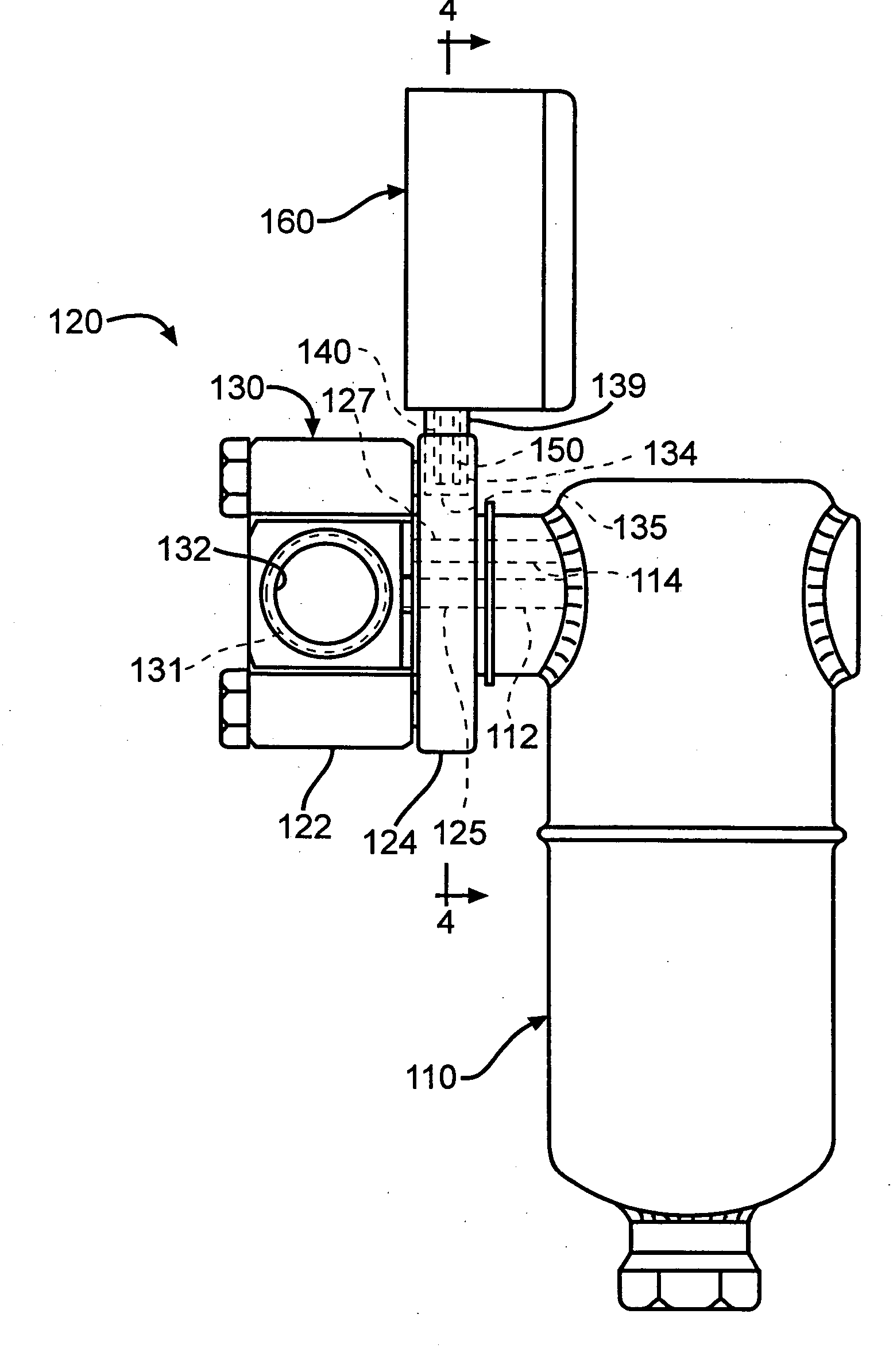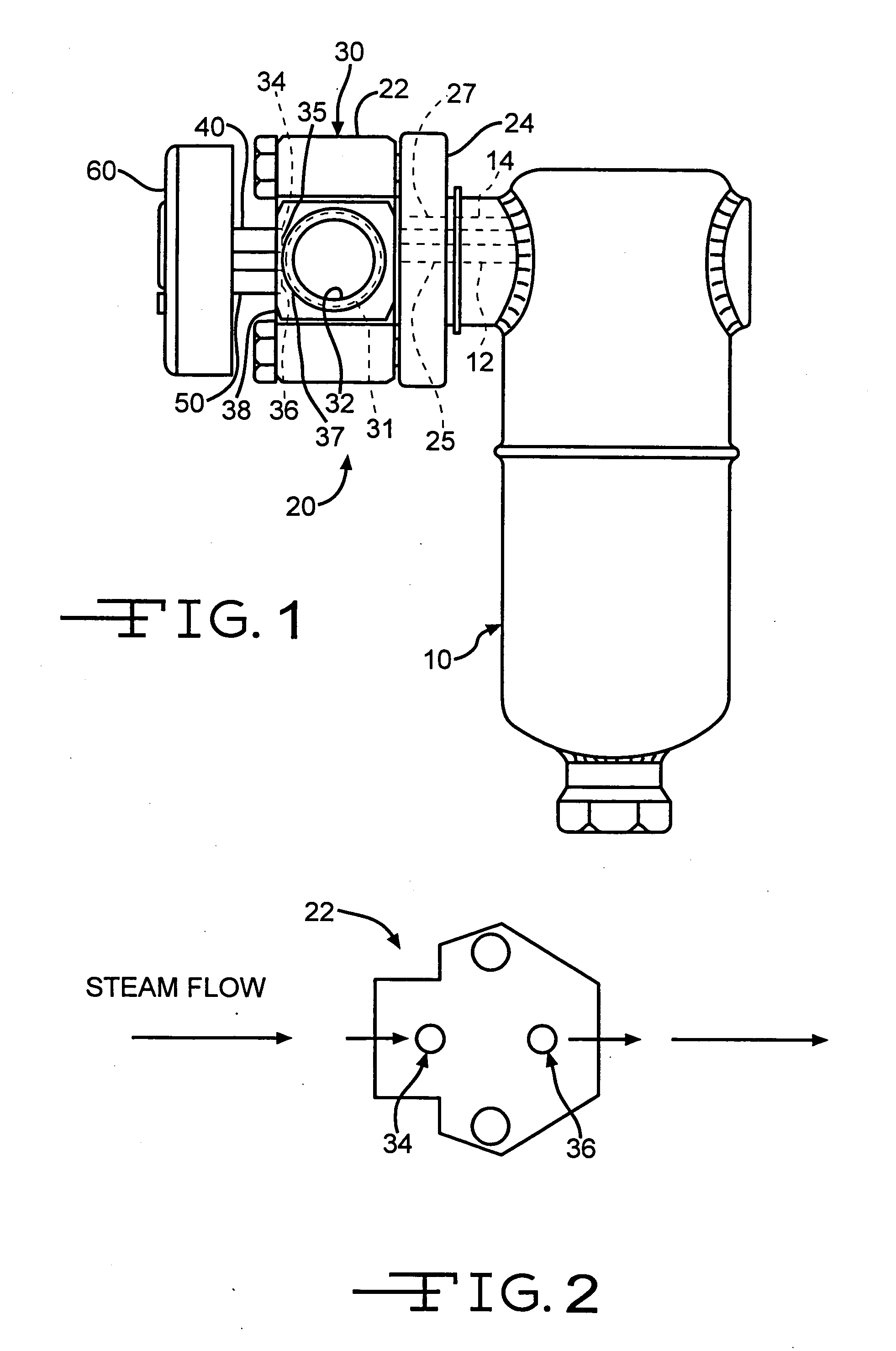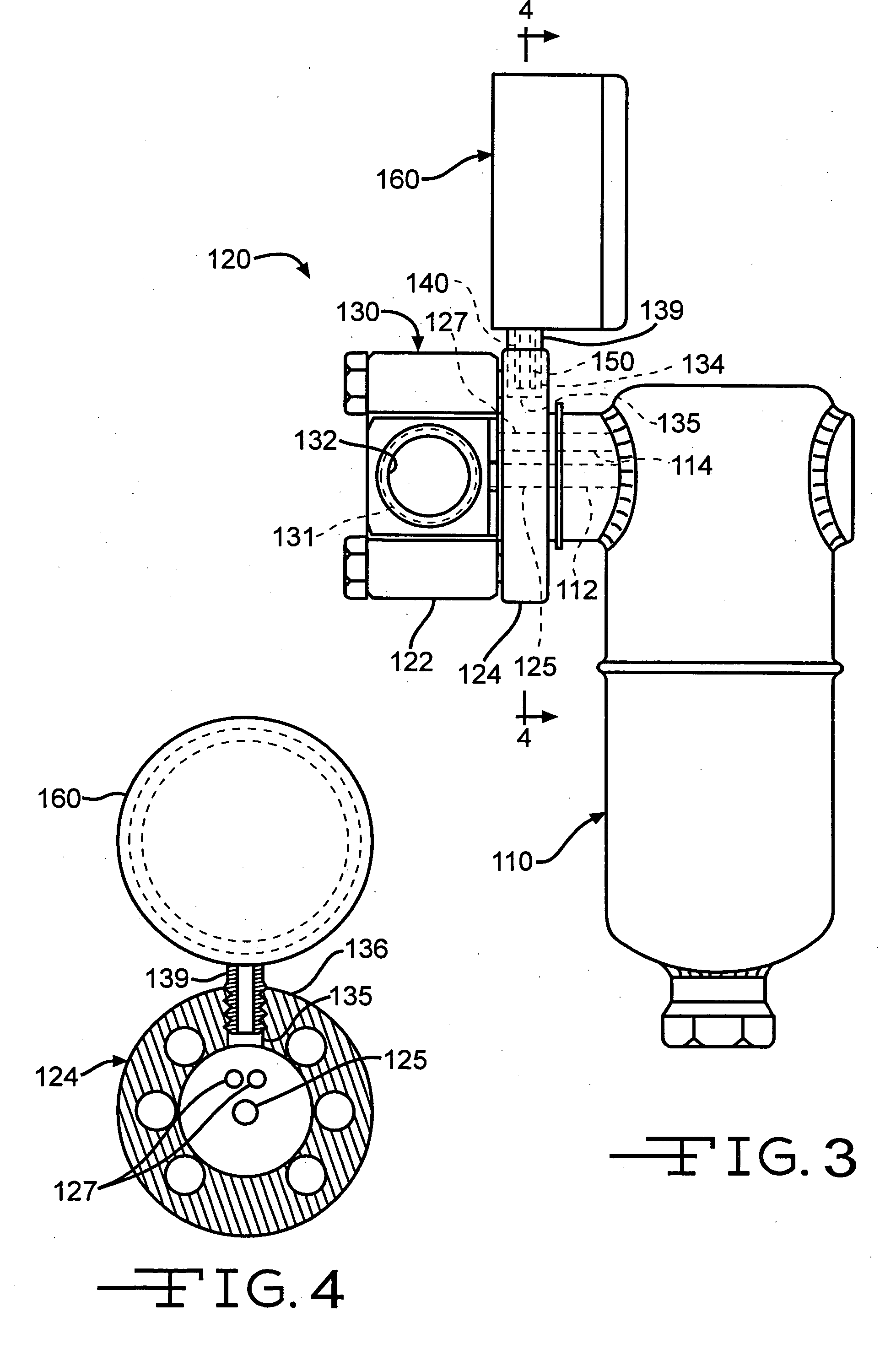Steam trap monitoring
a technology of steam traps and steam traps, applied in the field of steam trap monitoring, can solve the problems of reducing the efficiency of the steam system and losing valuable energy
- Summary
- Abstract
- Description
- Claims
- Application Information
AI Technical Summary
Benefits of technology
Problems solved by technology
Method used
Image
Examples
Embodiment Construction
[0028] Steam traps are automatic mechanical valves that discharge condensate (water) from a steam system. In a live steam system, if a steam trap fails to function properly, there are two possible failures: 1) failed “open”, where an automatic valve in the steam trap is continuously in the open condition allowing condensate and live steam to exit the system; or, 2) failed “closed” where the trap retains all the condensate in the system and sends such condensate back into the steam system, thereby reducing the efficiencies of the steam system and possibly damaging the process equipment.
[0029] As shown in FIG. 1, one type of steam trap is generally indicated at 10. The depicted steam trap 10 is generally conventional and well known in the art, although it is to be understood that the present invention may be used with other types of steam traps. The steam trap 10 is connected to a live steam line (not shown) which supplies steam into the steam trap 10. The steam trap 10 is also conne...
PUM
 Login to View More
Login to View More Abstract
Description
Claims
Application Information
 Login to View More
Login to View More - R&D
- Intellectual Property
- Life Sciences
- Materials
- Tech Scout
- Unparalleled Data Quality
- Higher Quality Content
- 60% Fewer Hallucinations
Browse by: Latest US Patents, China's latest patents, Technical Efficacy Thesaurus, Application Domain, Technology Topic, Popular Technical Reports.
© 2025 PatSnap. All rights reserved.Legal|Privacy policy|Modern Slavery Act Transparency Statement|Sitemap|About US| Contact US: help@patsnap.com



